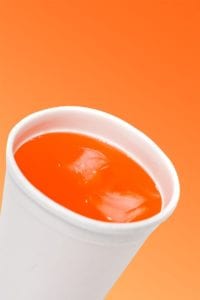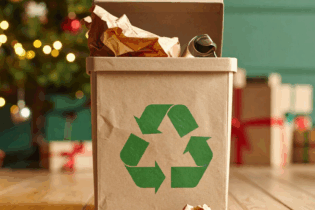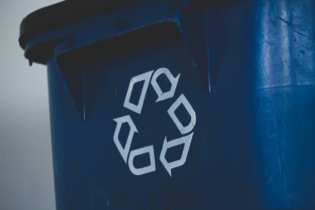Developing unique way of collecting and recycling PS
Ironically, polystyrene’s best attribute as a packaging material, has also proved to be its biggest drawback when it comes to recycling. Because it is 98% air and only 2% product, polystyrene is incredibly light. “This is excellent news for its carbon footprint, but poses a huge challenge for waste management companies who literally have to transport air in order to recycle the material for use in a variety of different products, ranging from picture frames, cornices and mouldings, to lightweight concrete and as beads for arts and craft projects,” Adri explains. Investing in machines at waste management companies as a case study demonstrating the viability of recycling Polystyrene
The first step the PSPC has taken to solve this problem, was to have hammer mills and balers installed on-site at large waste collectors who have the volumes to support the investment, such as the WastePlan site in Pretoria, who collects in excess of 150 tons of polystyrene per month. Recycling projects that touch and improve lives
The PSPC also increased its collection base of recycled polystyrene, by forming partnerships with schools that are eager to create dedicated polystyrene recycling areas on their premises. “The parents and pupils love the idea of being involved in “charity projects” such as the Tutu Desk, and Breadtags for Wheelchairs project that help to improve the lives of the less fortunate through the simple act of recycling their yoghurt tubs, cutlery and breadtags made from High Impact Polystyrene (HIPS) as well as expanded polystyrene (used for take-away containers and protective packaging),” Adri explains.
Building and construction projects use rPS in every shape, form and colour
During 2014 alone, 950 tonnes of polystyrene were recycled and used thanks to the growing number of players who are using rPS to build everything from low cost houses to designer homes. “Polystyrene offers excellent insulation properties for both hot and cold food and beverages. An increasing amount of building applications have recently been developed in South Africa that draw on these insulation properties and the benefit from fact that it is a material that is readily available,” Adri says.
These advancements in polystyrene recycling in South Africa means that all colour (including black) polystyrene recyclate are readily accepted for recycling. Until recently, applications using clear, colourless polystyrene had the highest recycling value. Coloured containers were acceptable, but their recyclability and the value of the recyclate were reduced. Black PS-E recyclate had a minimum value and was less preferred. Similarly, perforated PS-E trays that were designed to absorb the juices from the product packaged, were also not considered to be suitable for recycling. “All of this has now changed and there is no longer a difference in the price that white or pigmented PS can reach. Local recyclers have adapted and modified their machines and wash plants to overcome all these barriers in order to keep up with the demand. Conclusion “Polystyrene has a considerable contribution to make to the life of the consumer, both in the form of fast food packaging and as rigid packaging. As an industry sector, we contribute significantly to job creation, economic growth, employment and convenience living. All of these activities are supported by a well-structured environmental obligation that ensures that our environmental and extended producer responsibilities are met and addressed in the proper way. We are increasingly playing a much-needed facilitation role that brings buyers and sellers of recycled polystyrene into contact with each other, and are helping to create a “pull through” effect by supporting a growing number of end markets. At the same time, we are an advocate for our products and our projects with provincial and national governments and lobby with decision makers who could influence the future of our industry. The future looks bright for polystyrene recycling. We have a myriad of roles and responsibilities to fulfill, which we take very seriously. Despite constraints in resource and manpower, and look forward to an exciting year of ongoing growth,” Adri concludes.








